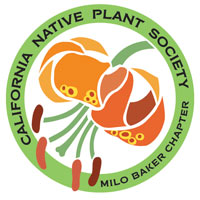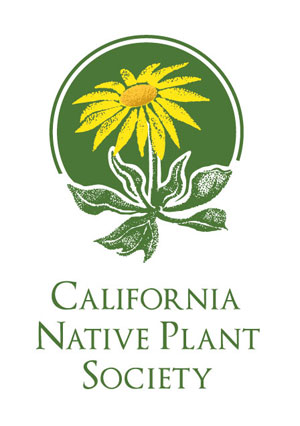|
California Native Plant Society
 |
In this issue: Speaker Series, Message From the President,
Cunningham Marsh, In the Summer Garden and Volunteer Opportunities. |
Speaker Series In-person in September!
|
Cynthia Powell- Executive Director of Calflora.org
Speaker Series, September, 2021 at 7:30pm via ZOOM
Description and biography to follow in September newsletter |
|
Speaker Calendar 2021
September: Cynthia Powell, ED, Calflora.org, Entering Sonoma County Plants
October: Saxon Holt, Photographer, Naturehood Gardening
November: Lorenzo Washington, Mycorrhiza and Plant Communities
|
|
Message from the Chapter President
The June equinox has passed and the days are getting shorter. Sadly, Sonoma County residents are hyper aware of water shortages and fire potential. As a matter of policy CNPS in the past has supported the idea that decades of fire suppression in California has contributed to wildfire occurrence and intensity. More fire in our state can be healthy for our landscapes but not at the risk of losing homes, businesses and indeed, whole neighborhoods. So, how can our county accomplish objectives that can be inherently contradictory, ie. keeping landscapes healthy while protecting people?
Last year Calfire certified a programmatic EIR for vegetation management. This has allowed projects throughout the state for prescribed burns, road clearing, shaded fuel breaks, reduction of ladder fuels, and other fire prevention measures. Many other projects outside of Calfire’s program have been approved and funded through the County, Coastal Commission, and other funders.
In response to this massive effort, CNPS has been working on a Fuel Break White Paper. The Calfire EIR stipulates biological surveys before approving work, but many projects may not be well scrutinized for plant and habitat impacts. This excellent paper will address best practices and requirements for agencies carrying out the work, as well as emphasizing the importance of defensible space and home hardening. It will be available later this summer.
Most veg reduction projects will start up again in the winter. Now is a good time to start contacting our policy makers, fire officials and groups like FireSafe Councils and C.O.P.E.s to remind them of native plant impacts. CNPS is also working on an action plan to implement recommendations in the paper. Watch for more info on this effort in state email and newsletters.
Have a wonderful summer. We plan to meet in-person in September!
Wendy Smit,
Chapter President |
|
|

|
|
|

|

|
|


